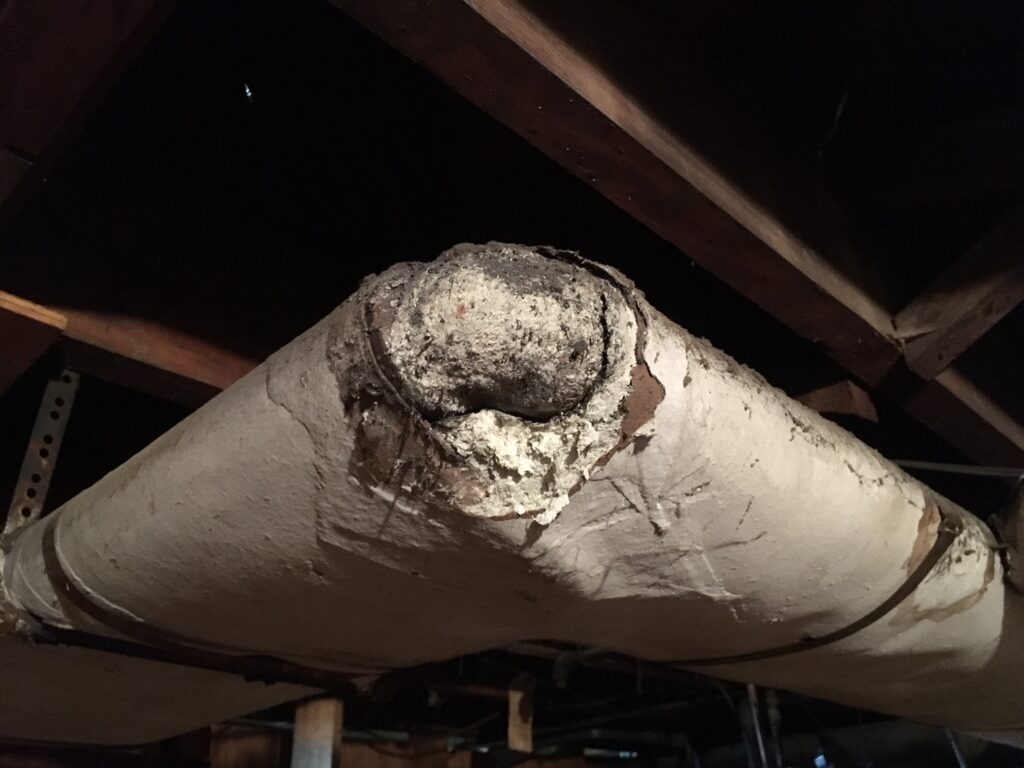Identifying toxic substances in your home, prior to a home renovation

Most of us have spent an inordinate amount of time sheltered in our homes, courtesy of the pandemic. We want to ensure that our homes are indeed safe – not just from the coronavirus but from toxic materials.
A home renovation is a perfect opportunity to remove asbestos, lead, mercury, mold and other debilitating and deadly substances from the home. While we prioritize creating healthy homes for our clients, we also want to safeguard the wellbeing of our employees and subtrades.
It is a moral obligation – and a legal one too.
Many homeowners and even contractors do not know that it’s the homeowner’s responsibility to hire an environmental firm to conduct a Designated Substance Survey (DSS) prior to any demolition work. This is a requirement by the Ontario Ministry of Labour (MoL).
A DSS also helps accurately cost major aspects of the renovation such as demolition and disposal fees, HVAC drawings, structural drawings and specs, and a reflected ceiling plan.
The province recognizes eleven Designated Substances, but five are likely to be found in a house, particularly older homes: asbestos, lead, silica, benzene and mercury. Mold is not considered a Designated Substance but is listed under “other hazardous materials.”

Not conducting a DSS has serious consequences. The homeowner can be blindsided by additional costs unaccounted for in the budget, and be liable for any loss or damages associated with a discovered designated substance. Without a DSS report, the MoL can force the shut down of your project.
Cue Angelina Sampieri, Greening Homes’ go-to environmental consultant and owner of The Healthy Abode Inc. Angelina offers indoor environmental assessments to residential and commercial clients in Toronto and surrounding areas. Angelina prepares a DSS and even an Asbestos Management Survey based on her inspection. She also offers a larger package that includes inspection of 15 heavy metals, including lead, in drinking water.
A DSS inspection involves a walk-through of the site to visually identify designated substances in accessible areas. Angelina and her team assess the type, characteristics and condition of the building materials and when necessary, samples of certain materials for laboratory analysis.
The DSS outlines materials of concern on the job site, lab analysis and results of materials tested, overall discussion of the materials, such as types and locations, and conclusions and recommendations. The latter includes relevant abatement and remediation guidelines, depending on the substance found. For example, asbestos must be removed by a professional asbestos abatement service.
Greening Homes prominently displays the DSS at the worksite, as per the Occupational Health and Safety Act, to protect workers from any hazards on the job.
“It is critically important to protect the health and well-being of workers, and by extension their families,” says Angelina. “Far too often, workers are injured, usually unknowingly, by materials such as asbestos and lead paint. These are hazards that they bring home to their families, especially their children.”
One of the first steps in keeping workers – and homeowners – safe is by having a professional company, such as The Healthy Abode Inc., prepare a comprehensive report of the environmental hazards on a job site.
Chris Phillips, Greening Homes’ founder and President, is an expert contributor of Neighbours of High Park Magazine. This article appeared in the June 2022 issue.